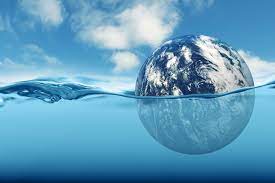Global sea level rise is one of the most pressing issues facing the world today. As the Earth’s climate continues to warm, the oceans are rising at an unprecedented rate, posing significant risks to coastal communities, infrastructure, and ecosystems around the world.
Causes of Global Sea Level Rise
The primary cause of sea level rise is the thermal expansion of seawater, which occurs as the Earth’s climate warms due to increasing greenhouse gas emissions. As the ocean water warms, it expands and takes up more space, causing the sea level to rise. This effect alone is responsible for about half of the observed sea level rise since the mid-20th century.

The other major contributor to sea level rise is the melting of land ice, including glaciers and ice sheets in Greenland and Antarctica. As these ice masses melt, they add more water to the oceans, causing sea levels to rise. The rate of ice loss has accelerated in recent decades, and if it continues at its current pace, it could significantly contribute to sea level rise in the future.
Impacts of Global Sea Level Rise
The impacts of sea level rise are wide-ranging and can be devastating for coastal communities, ecosystems, and infrastructure. Some of the most significant impacts of sea level rise include:
- Increased coastal flooding and erosion: As sea levels rise, coastal areas are increasingly vulnerable to flooding and erosion, which can damage property and infrastructure, and displace people from their homes.
- Saltwater intrusion: As sea levels rise, saltwater can penetrate into freshwater sources, making them unusable for drinking, irrigation, and other purposes.
- Ecosystem damage: Coastal ecosystems, such as mangroves and salt marshes, are particularly vulnerable to sea level rise, which can cause habitat loss, increased erosion, and saltwater intrusion.
- Increased risk from storms: Rising sea levels can exacerbate the impacts of storms and storm surges, which can cause significant damage to coastal communities and infrastructure.
Mitigation Strategies for Global Sea Level Rise
While the impacts of sea level rise are significant, there are a number of mitigation strategies that are being implemented to address this global challenge. Some of the key strategies include:
- Reducing greenhouse gas emissions: The most effective way to address sea level rise is to reduce greenhouse gas emissions, which will slow the rate of warming and limit the expansion of seawater and the melting of land ice.
- Implementing adaptation measures: Many coastal communities are implementing adaptation measures, such as building sea walls, restoring wetlands, and relocating infrastructure and communities away from vulnerable coastal areas.
- Investing in research and development: There is a need for continued research and development in the field of sea level rise, including improved modeling and forecasting tools, as well as new technologies for coastal adaptation and mitigation.
In conclusion, global sea level rise is a complex and multifaceted challenge that requires a comprehensive and collaborative response. By reducing greenhouse gas emissions, implementing adaptation measures, and investing in research and development, we can work together to address this global threat and protect coastal communities, ecosystems, and infrastructure for generations to come.
Important Links